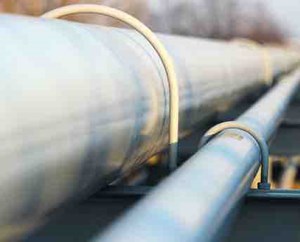Construction entities call for punishment for pipeline attacks, improved mapping in pipeline safety
(UI) — The Distribution Contractors Association (DCA) and the United Association of Union Plumbers and Pipefitters (UA) have published a letter urging Congress to take action to address the enduring problem of physical attacks on critical energy infrastructure.
In addition, Congress should include provisions to encourage the use of geographic information systems (GIS) mapping as part of these damage prevention programs. On Wednesday, the House Transportation and Infrastructure Committee’s Subcommittee on Railroads, Pipelines, and Hazardous Materials held a hearing on “Pipeline Safety: Reviewing Implementation of the PIPES Act of 2020 and Examining Future Safety Needs.”
The hearing was held to evaluate efforts to meet the mandates included in the Protecting Our Infrastructure of Pipelines and Enhancing Safety (PIPES) Act of 2020 at a time when the Committee intends to reauthorize the federal pipeline safety program this year. These organizations are advocating on a range of issues pending in this year’s pipeline safety discussion, including suggested actions to curb physical attacks on energy infrastructure and to encourage the use of GIS mapping.
Protection of Critical Infrastructure from Physical Attacks
“While criminal attacks on pipeline infrastructure is not headline news anymore, sabotage on natural gas pipelines is an enduring problem and needs to be addressed,” Rob Darden, executive vice president of DCA, said. “While DCA supports the right for peaceful activism, including peaceful protests, we strongly support legislative language that would hold those who engage in criminal activities during protests more accountable.”
He added: “In addition, pipeline facilities under construction should be included within the scope of this provision. While interfering or tampering with the operation of a pipeline would clearly compromise pipeline safety, vandalism and destruction of nearby equipment used to build a pipeline can be just as dangerous. For example, setting construction equipment on fire near a natural gas pipeline can be as dangerous as turning a valve.”
“United Association members are the best trained and most highly skilled craftspeople in the industry – and we work tirelessly to provide reliable and affordable energy to millions of Americans. Sadly, physical attacks on pipeline infrastructure itself and even our equipment and jobsites compromise our shared goals and put the safety of our members at risk,” Mark McManus, general president of the United Association, said. “Strong bipartisan action to hold perpetrators accountable, and to curb future attacks, is essential to protecting our members on the jobsite and ensuring we can meet our shared energy goals.”
GIS Mapping
The PIPES Act of 2020 include provisions to require operators of gas distribution pipelines to “identify and manage traceable, reliable, and complete records, including maps and other drawings,” and language that will ensure that this documentation is “accessible to all personnel responsible for performing or overseeing relevant construction or engineering work.” DCA and the UA believe increased use of GIS is the most effective method of mapping underground facilities, including natural gas pipelines.
“Accurate mapping of underground facilities is a fundamental part of accurate and timely locating,” Darden said. “Ensuring the use of GIS should be considered a priority as pipeline safety legislation is developed and considered.”
GIS connects data to a map, integrating location data with a range of limiting information regarding the subsurface facilities in that area, and it allows for layering of data tied to geographic points. Rather than restricting the user to limited features on a static map, GIS mapping allows for viewing customizable combinations of data layers in a single dynamic tool.
Related News
From Archive

- Glenfarne Alaska LNG targets late-2026 construction start for 807-mile pipeline project
- U.S. water reuse boom to fuel $47 billion in infrastructure spending through 2035
- $2.3 billion approved to construct 236-mile Texas-to-Gulf gas pipeline
- Major water pipe break in Puerto Rico hits over 165,000 customers
- Potomac River Tunnel project enters construction phase beneath Washington, D.C.
- Pennsylvania American Water launches interactive map to identify, replace lead water service lines
- Trump's tariffs drive $33 million cost increase for Cincinnati sewer project
- Utah city launches historic $70 million tunnel project using box jacking under active rail line
- Tulsa residents warned after sewer lines damaged by boring work
- Fatal trench collapse halts sewer construction in Massachusetts; two workers hospitalized




Comments